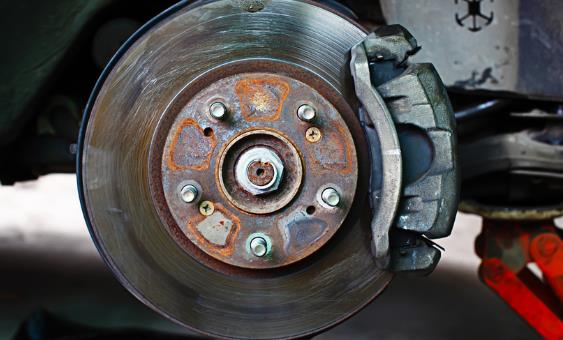Is The Jaguar 5.0 A Ford Engine? [Answered]
The intriguing question, “Is The Jaguar 5.0 A Ford Engine?”, captures the curiosity of car enthusiasts and experts alike. This article delves deeply into the intricate relationship between Jaguar and Ford, exploring the origins and characteristics of the Jaguar 5.0 engine. Understanding this connection is essential for comprehending the development and evolution of Jaguar’s engineering prowess, particularly in the context of its collaboration with Ford.
Key Takeaways
- The Jaguar 5.0 engine’s development involved significant input from Ford.
- Despite the collaboration, the Jaguar 5.0 possesses unique features distinguishing it from typical Ford engines.
- The engine signifies a blend of Ford’s resources and Jaguar’s distinct engineering philosophy.
Is The Jaguar 5.0 A Ford Engine?
The Jaguar 5.0 engine, a subject of much debate, indeed shares its roots with Ford. This engine was developed during a period when Jaguar was under Ford’s ownership. However, it’s crucial to understand that while Ford provided resources and foundational technology, the Jaguar 5.0 was specifically tailored to meet the unique standards and performance expectations of Jaguar vehicles.

The Origin and Development
Background of Jaguar and Ford’s Partnership:
- Jaguar was acquired by Ford in 1989.
- This acquisition led to shared resources and technology exchange.
- The development of new engines was a key focus of this partnership.
The Evolution of the Jaguar 5.0 Engine:
- The Jaguar 5.0 engine was developed in the late 2000s.
- Ford’s technology and engineering expertise played a significant role.
- Despite the influence, Jaguar engineers customized the engine for specific performance and luxury standards.
Technical Specifications and Features
Unique Characteristics of the Jaguar 5.0 Engine:
- The engine features advanced technology like direct fuel injection and variable valve timing.
- It is renowned for its power, efficiency, and smooth operation.
- Jaguar’s engineering finesse is evident in the engine’s performance and reliability.
Comparison with Ford Engines:
- While sharing foundational elements, the Jaguar 5.0 differs significantly from Ford’s engines.
- These differences lie in tuning, performance characteristics, and intended use in luxury vehicles.
The Impact of Ford’s Technology on Jaguar
Advancements in Engineering
The collaboration with Ford brought about significant advancements in Jaguar’s engine technology. Ford’s vast resources and technical expertise provided a solid foundation upon which Jaguar could build and innovate.
The Balance Between Collaboration and Individuality
Collaborative Efforts:
- Shared technology and resources were crucial in developing advanced engines.
- The collaboration allowed Jaguar to access cutting-edge automotive technology.
Maintaining Jaguar’s Unique Identity:
- Despite the collaboration, Jaguar maintained its unique engineering identity.
- The Jaguar 5.0 engine exemplifies the brand’s commitment to luxury and performance.
Performance and Reliability

Power and Efficiency
The Jaguar 5.0 engine is lauded for its exceptional power output and fuel efficiency. This balance makes it a preferred choice among luxury car enthusiasts.
Reliability and Maintenance
Long-Term Performance:
- The engine is known for its long-term reliability and durability.
- Regular maintenance is key to ensuring its longevity.
Maintenance Requirements:
- Despite its robustness, the Jaguar 5.0 requires meticulous maintenance.
- Adhering to Jaguar’s maintenance schedule ensures optimal performance.
Market Reception and Consumer Feedback
Reception in the Luxury Car Market
The Jaguar 5.0 engine has been well-received in the luxury car market. It’s praised for its performance, efficiency, and the distinct driving experience it offers.
Consumer Feedback and Satisfaction
Customer Reviews:
- Owners of Jaguar models with the 5.0 engine report high satisfaction levels.
- The engine is often highlighted for its power and smoothness.
Market Impact:
- The Jaguar 5.0 has positively impacted Jaguar’s brand image.
- It has strengthened Jaguar’s position in the luxury car segment.
Environmental Considerations
Emissions and Fuel Economy
In an era of environmental consciousness, the Jaguar 5.0 engine is designed to balance performance with reduced emissions and improved fuel economy.
Jaguar’s Commitment to Sustainability
Efforts in Reducing Environmental Impact:
- Jaguar has made strides in developing engines that are more environmentally friendly.
- The Jaguar 5.0 engine is part of this eco-friendly initiative.
Advanced Engineering and Design Innovations
The Jaguar 5.0 engine’s design and engineering stand as a testament to the innovative spirit of Jaguar, amplified by the influence of Ford’s technological capabilities. This section delves into the sophisticated engineering techniques and design philosophies that differentiate this engine from its counterparts.

Cutting-Edge Engineering Techniques
Innovative Approaches in Engine Design:
- The engine’s development involved state-of-the-art engineering techniques, setting it apart in terms of performance and efficiency.
- Jaguar utilized advanced materials and manufacturing processes to enhance the engine’s durability and reduce its weight.
Integration of Modern Technologies:
- Technologies like supercharging and intelligent software systems were integrated to optimize power delivery and fuel efficiency.
- These innovations reflect Jaguar’s forward-thinking approach in engine design, ensuring a superior driving experience.
The Design Philosophy Behind the Jaguar 5.0 Engine
Blending Tradition with Innovation:
- Jaguar’s design philosophy has always been about blending traditional elegance with modern innovation.
- The Jaguar 5.0 engine is a prime example of this philosophy, showcasing classic engineering principles combined with contemporary technological advancements.
Focus on Driver Experience:
- Every aspect of the engine’s design was oriented towards enhancing the driver’s experience.
- The focus on smooth acceleration, responsive power delivery, and a refined sound profile reflects Jaguar’s commitment to luxury and performance.
Integration with Jaguar’s Vehicle Lineup
The Jaguar 5.0 engine found its way into a variety of Jaguar models, each benefiting from its unique characteristics. This section explores how the engine complements different vehicle types and the specific adaptations made for each model.
Tailoring to Different Models
Adaptations for Diverse Vehicle Needs:
- The engine was adapted to suit the diverse requirements of different Jaguar models, from sports cars to luxury sedans.
- Modifications in tuning and setup were made to align with the distinct character and performance needs of each model.
Synergy with Vehicle Design:
- The engine’s design and performance characteristics were harmoniously integrated with the overall design and aerodynamics of each vehicle.
- This synergy ensured that the engine not only powered the vehicle but also enhanced its driving dynamics and aesthetic appeal.
Impact on Vehicle Performance
Enhancing Driving Dynamics:
- The incorporation of the Jaguar 5.0 engine significantly improved the acceleration, top speed, and handling of the vehicles.
- These improvements were critical in reinforcing Jaguar’s reputation for producing high-performance luxury vehicles.
Influence on Model Popularity:
- Models equipped with the Jaguar 5.0 engine saw an increase in popularity and market demand.
- The engine’s reputation for performance and reliability contributed to the success of these models.
Future of Jaguar’s Powertrain Development
As the automotive industry evolves, Jaguar continues to innovate in its powertrain development. This section looks at the future direction of Jaguar’s engine technology, particularly in the context of environmental sustainability and the shift towards electrification.

Embracing Electrification and Hybrid Technology
Transition to Sustainable Powertrains:
- Jaguar is actively investing in electrification and hybrid technologies, recognizing the need for environmentally sustainable powertrains.
- The learnings from the development of the Jaguar 5.0 engine are being applied to create advanced electric and hybrid systems.
Incorporating Hybrid Technology:
- Hybrid versions of Jaguar’s models are expected to combine traditional combustion engines with electric motors, leveraging the strengths of both.
- This approach allows for a gradual transition from traditional engines to fully electric powertrains.
Innovation in Electric Vehicle Technology
Developing Next-Generation EVs:
- Jaguar is focused on developing cutting-edge electric vehicles (EVs) that embody the brand’s luxury and performance ethos.
- Innovations in battery technology, motor efficiency, and vehicle design are key areas of focus.
Maintaining Brand Identity in the EV Era:
- Jaguar aims to maintain its unique brand identity and driving experience in the era of EVs.
- The company’s heritage in engineering excellence is expected to be reflected in its future EV offerings.
Does Jaguar Use Ford 5.0 Engine?
Jaguar has indeed utilized engines that share a common lineage with Ford’s powertrains, including the 5.0-liter engine. This collaboration dates back to the period when Jaguar was under Ford’s ownership (1989 to 2008). The 5.0-liter V8 engine used in some Jaguar models is a product of this partnership but with significant modifications unique to Jaguar.

While the basic architecture of the 5.0-liter engine might have similarities with Ford’s engines, Jaguar’s version was extensively re-engineered and tailored to suit its specific performance criteria and luxury standards.
This re-engineering includes unique calibration, tuning, and the integration of advanced technologies like direct injection and supercharging, which are not necessarily present in Ford’s variant of the engine.
It’s essential to note that the development of the Jaguar 5.0-liter engine was a significant undertaking. Jaguar leveraged the resources and technical base provided by Ford to develop an engine that would meet the high expectations of power, refinement, and smoothness expected from a Jaguar powertrain. As such, while the Jaguar 5.0 engine shares roots with Ford, it is distinct in its design and performance characteristics.
Is The Jaguar Engine Made By Ford?
The Jaguar engine, particularly the 5.0-liter V8 variant, was developed during a time when Jaguar was a part of the Ford Motor Company. However, saying the Jaguar engine is made by Ford oversimplifies the relationship.
While Ford’s involvement provided a foundation and resources, Jaguar’s engineering team extensively modified and adapted these engines to align with Jaguar’s specific requirements.
During the development of the 5.0-liter engine, Jaguar’s engineers focused on creating a powertrain that would offer the luxury, performance, and distinctive driving experience associated with the Jaguar brand.
This involved customizing aspects of the engine such as its internal components, software, and overall performance characteristics. As a result, the final engine, as seen in Jaguar vehicles, is quite different from any engine you would find in a Ford model of that time.
The collaboration with Ford was more about resource and technology sharing rather than Ford directly manufacturing engines for Jaguar. After Jaguar’s separation from Ford, the company continued to develop its engines, further distinguishing them from Ford’s powertrains. The ongoing evolution of Jaguar’s engines reflects their commitment to innovation and maintaining a unique brand identity, distinct from Ford.
Who Makes The Jaguar V8 Engine?
The Jaguar V8 engines, particularly the renowned 5.0-liter variant, have been developed and manufactured primarily by Jaguar Land Rover (JLR) itself.
Jaguar, as a marque of JLR, has its own dedicated engineering teams responsible for the design and development of its engines. These teams operate with a high degree of autonomy, especially in creating engines that align with Jaguar’s luxury and performance ethos.

The development process of Jaguar’s V8 engines involves not only the engineering of the engine itself but also its integration with the vehicle’s overall design and electronic systems. This integration is crucial to ensure that the engine delivers the performance, sound, and feel characteristic of Jaguar vehicles.
It’s important to note that while Jaguar was under Ford’s ownership, there was a considerable exchange of technology and resources. However, Jaguar’s engineering teams were still primarily responsible for developing and customizing engines for their vehicles.
After Jaguar’s separation from Ford, the company has continued to invest heavily in its engine development capabilities, further advancing its V8 engines and other powertrains to meet evolving performance and environmental standards.
Who Builds Engines For Jaguar?
Jaguar Land Rover (JLR) builds the majority of the engines for Jaguar vehicles. This manufacturing is carried out at JLR’s Engine Manufacturing Centre, located in Wolverhampton, UK. This state-of-the-art facility is responsible for producing a range of engines that power both Jaguar and Land Rover vehicles.
The Engine Manufacturing Centre is known for its advanced manufacturing techniques and a strong focus on sustainability. It represents a significant investment by JLR in its capability to produce high-quality, efficient engines in-house.
The facility enables JLR to have direct control over the quality, performance, and technological innovations of the engines used in Jaguar vehicles.
JLR has also made significant strides in developing hybrid and electric powertrains, reflecting the industry’s shift towards more sustainable forms of transportation. These developments are part of JLR’s broader strategy to become a leader in electrified and environmentally friendly vehicles.
Jaguar XF 5.0 Vs Mustang GT 5.0 Difference
Comparing the Jaguar XF 5.0 and the Mustang GT 5.0 highlights the distinct approaches of the two iconic brands to performance and luxury. The Jaguar XF 5.0, especially in its high-performance trims, is equipped with a 5.0-liter supercharged V8 engine, a hallmark of Jaguar’s engineering.
This engine is designed to offer a balance of luxury, refinement, and power, tailored to a premium driving experience. The XF 5.0 delivers smooth acceleration, refined handling, and a luxurious interior, making it a quintessential executive sedan.

On the other hand, the Mustang GT 5.0 is an embodiment of American muscle car heritage. Its 5.0-liter V8, known as the “Coyote” engine, is focused more on raw power and performance.
While it shares the same displacement as the Jaguar’s engine, the Mustang’s V8 is naturally aspirated and tuned for a different kind of driving experience – one that emphasizes aggressive acceleration and a visceral driving feel.
The Mustang GT, with its sportier setup, offers a more exhilarating and straightforward performance compared to the more nuanced and sophisticated nature of the Jaguar XF.
Who Makes The 5.0 Supercharged V8 In The F Pace SVR?
The 5.0-liter supercharged V8 engine in the Jaguar F-Pace SVR is manufactured by Jaguar Land Rover (JLR). This engine is part of JLR’s lineup of high-performance engines and is known for its exceptional power output and responsiveness.
Designed and built in-house by Jaguar, this engine exemplifies the brand’s commitment to combining luxury with thrilling performance.
This V8 engine, used in the F-Pace SVR, is particularly notable for its supercharger, which enhances the engine’s power and torque delivery. It enables the F-Pace SVR to deliver an exhilarating driving experience, with rapid acceleration and dynamic response that is expected from a high-performance SUV.
The engine is not only a testament to Jaguar’s engineering capabilities but also to its focus on creating vehicles that offer a unique blend of performance, comfort, and luxury.
The development and manufacturing of this engine at JLR’s facilities ensure that it meets the specific requirements and standards set by Jaguar for its vehicles. This level of control over the engine’s production is crucial in maintaining the quality and performance characteristics synonymous with the Jaguar brand.
Conclusion
The Jaguar 5.0 engine represents a unique blend of Ford’s technological resources and Jaguar’s luxury engineering ethos. While its origins are rooted in the collaboration with Ford, the engine stands out with its distinct characteristics tailored to Jaguar’s high standards.
Its balance of power, efficiency, and luxury continues to impress both in the market and among consumers, solidifying Jaguar’s reputation in the luxury automotive world.
Top FAQ’s
What Future Developments Are Expected for Jaguar’s Engine Technology?
Jaguar is moving towards electrification and hybrid technology, focusing on sustainable powertrains. Future developments include the integration of hybrid systems in their existing lineup and the launch of new electric vehicles (EVs). This shift will involve advancements in battery technology, electric motor efficiency, and overall vehicle design, reflecting Jaguar’s commitment to innovation and environmental responsibility.
Are There Any Known Issues with the Jaguar 5.0 Engine?
While the Jaguar 5.0 engine is generally reliable, like any complex mechanical system, it can have issues. Common concerns may include sensor malfunctions or wear in components like superchargers over time. Regular maintenance and prompt attention to any unusual performance can help mitigate these issues.
How Does the Jaguar 5.0 Engine Impact Fuel Economy?
The Jaguar 5.0 engine, with its advanced fuel injection and management systems, offers an improved fuel economy compared to older or less sophisticated engines. However, as a high-performance engine, its fuel consumption can be higher than smaller, less powerful engines, especially under demanding driving conditions.
What Maintenance Does the Jaguar 5.0 Engine Require?
Regular maintenance for the Jaguar 5.0 engine includes routine oil changes, filter replacements, and checks of the ignition system, fuel system, and cooling system. Periodic inspections of engine components for wear and tear are also recommended. Following Jaguar’s official maintenance schedule is key to ensuring its longevity and performance.
How Does Jaguar’s 5.0 Engine Compare to Competitors in the Same Class?
The Jaguar 5.0 engine stands out in its class for its balance of power, efficiency, and luxury. Compared to competitors, it often offers superior acceleration and a smoother driving experience, reflecting Jaguar’s emphasis on performance and refinement. However, specific comparisons would depend on the individual competitor models and their respective engine specifications.

Welcome to the exhilarating world of Matt Rex, a professional car racer turned renowned vehicle enthusiast. Immerse yourself in his captivating blog as he shares heart-pounding adventures, expert reviews, and valuable insights on cars, trucks, jets, and more. Fuel your passion for speed and discover the beauty of vehicles through Matt’s engaging stories and meticulous expertise. Join the ever-growing community of enthusiasts who find inspiration and expert advice in Matt Rex’s blog—a digital hub where the thrill of speed meets the pursuit of knowledge.







